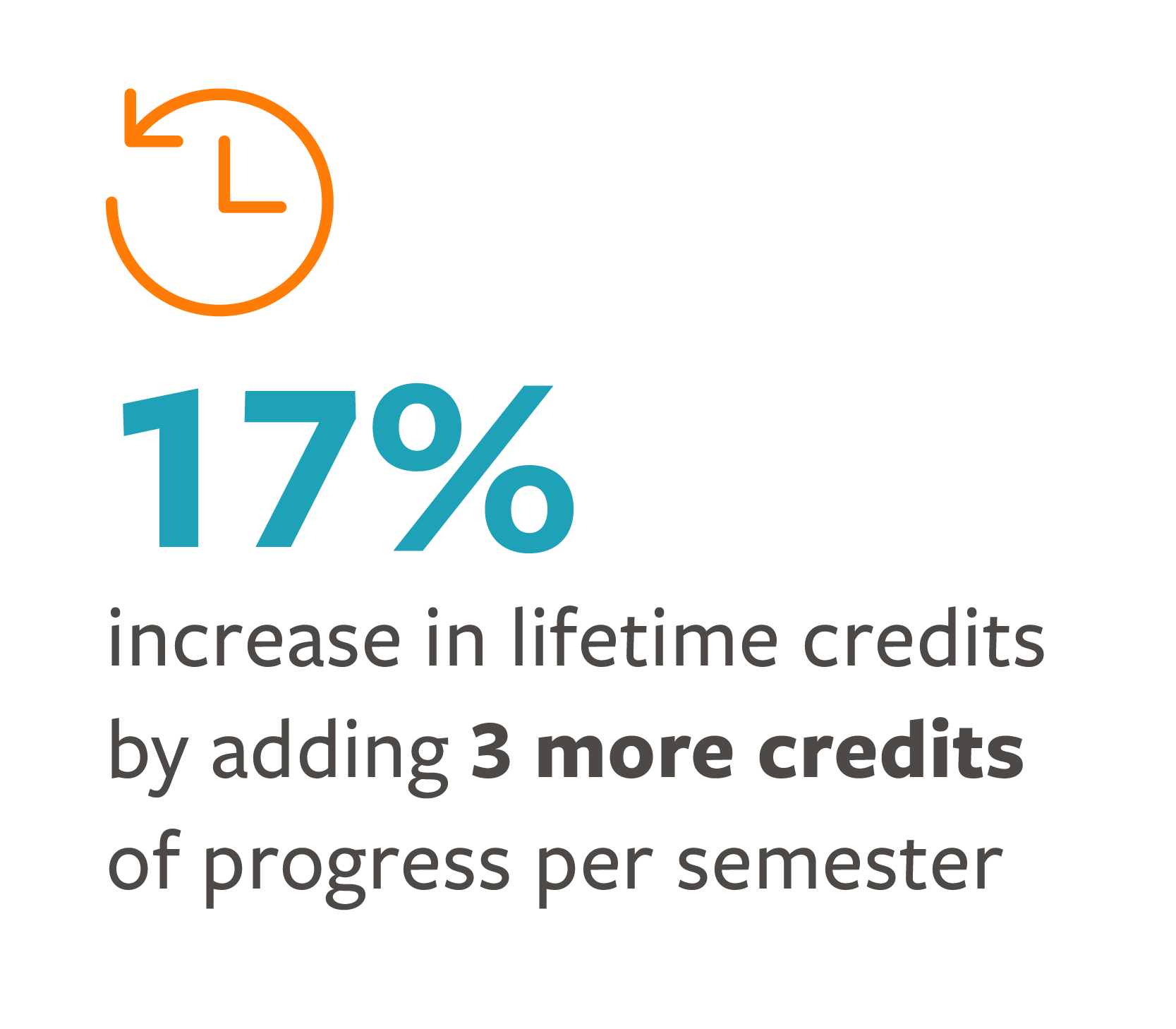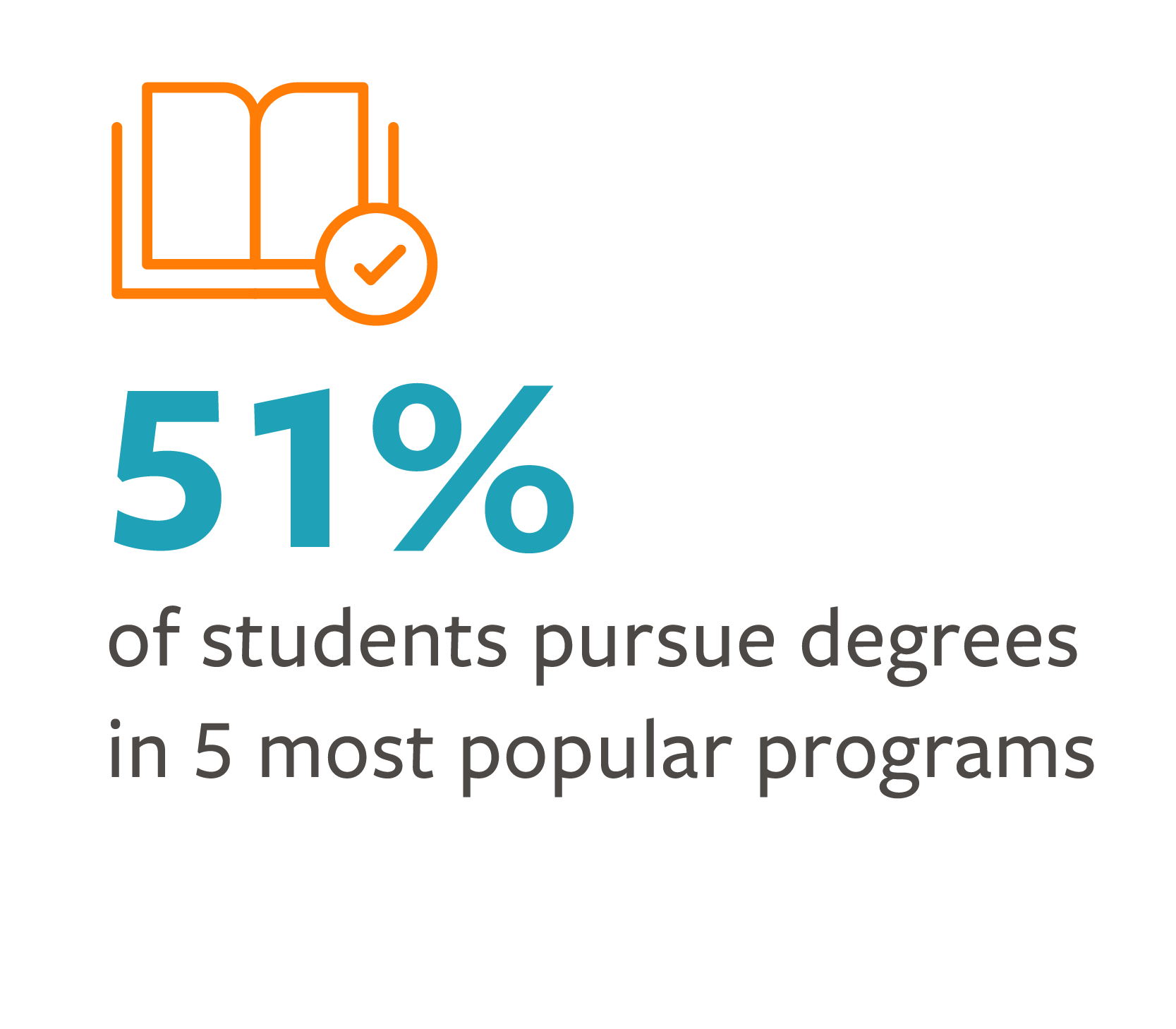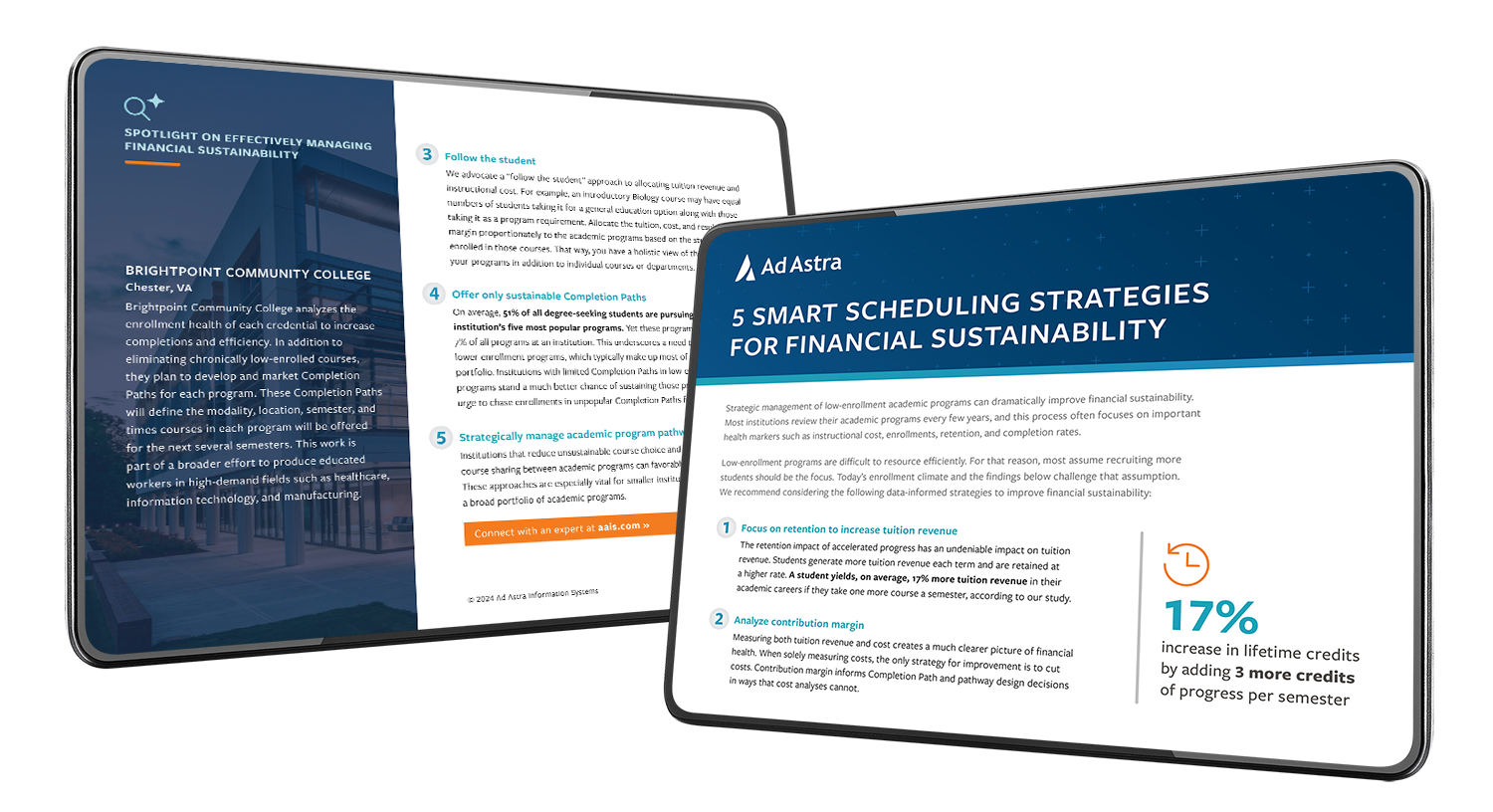ARTICLE
5 Smart Scheduling™ Strategies for Financial Sustainability
Strategic management of low-enrollment academic programs can dramatically improve financial sustainability. Most institutions review their academic programs every few years, and this process often focuses on important health markers such as instructional cost, enrollments, retention, and completion rates.
Low-enrollment programs are difficult to resource efficiently. For that reason, most assume recruiting more students should be the focus. Today’s enrollment climate and the findings below challenge that assumption. We recommend considering the following data-informed strategies to improve financial sustainability:
Focus on retention to increase tuition revenue
Analyze contribution margin
Adopt the "follow-the-student" model
Offer sustainable Completion Paths™
Manage academic program pathways
1 | Focus on retention to increase tuition revenue
The retention impact of accelerated progress has an undeniable impact on tuition revenue. Students generate more tuition revenue each term and are retained at a higher rate. A student yields, on average, 17% more tuition revenue in their academic careers if they take one more course a semester, according to our study.
2 | Analyze contribution margin
Measuring both tuition revenue and cost creates a much clearer picture of financial health. When solely measuring costs, the only strategy for improvement is to cut costs. Contribution margin informs Completion Path™ and pathway design decisions in ways that cost analyses cannot.

Spotlight on effectively managing financial sustainability
BRIGHTPOINT COMMUNITY COLLEGE
CHESTER, VA
Brightpoint Community College analyzes the enrollment health of each credential to increase completions and efficiency. In addition to eliminating chronically low-enrolled courses, they plan to develop and market Completion Paths for each program. These Completion Paths will define the modality, location, semester, and times courses in each program will be offered for the next several semesters. This work is part of a broader effort to produce educated workers in high-demand fields such as healthcare, information technology, and manufacturing.

3 | Follow the student
We advocate for a “follow-the-student” approach to allocating tuition revenue and instructional cost. For example, an introductory Biology course may have equal numbers of students taking it for a general education option along with those taking it as a program requirement. Allocate the tuition, cost, and resulting margin proportionately to the academic programs based on the students enrolled in those courses. That way, you have a holistic view of the health of your programs in addition to individual courses or departments.
4 | Offer only sustainable Completion Paths™
On average, 51% of all degree-seeking students are pursuing degrees in an institution’s five most popular programs. Yet these programs only make up 7% of all programs at an institution. This underscores a need to prudently manage lower-enrollment programs, which typically make up most of an institution’s portfolio. Institutions with limited Completion Paths in low-enrollment academic programs stand a much better chance of sustaining those programs. Resist the urge to chase enrollments in unpopular Completion Paths for those programs.
5 | Strategically manage academic program pathways
Institutions that reduce unsustainable course choice and intentionally leverage course sharing between academic programs can favorably impact their bottom line. These approaches are especially vital for smaller institutions wishing to preserve a broad portfolio of academic programs.

Download Your Copy Now








.png?width=84&height=81&name=search%20(1).png)







